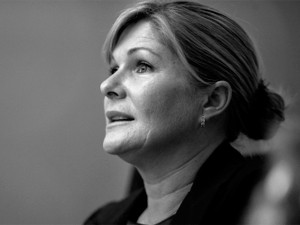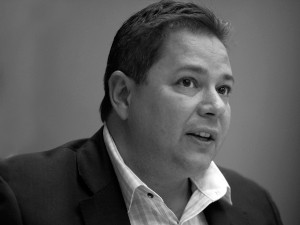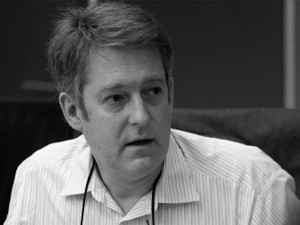
And so it proved at the recent ITWeb roundtable on telecoms. To open proceedings, IDC analyst Spiwe Chireka raises the point about high costs and asks what, exactly, is the pain-point around pricing that is causing it not to move down fast enough to please local consumers.
Christopher Geerdts, chairperson of the Wireless Access Providers' Association, believes GSM's loss is WiFi's gain, noting that 90% of wireless access providers use WiFi rather than licensed spectrum. "There isn't really a pain-point in the sense that people are holding back. There's enormous growth," he says.
"We had a 27% increase in members this year and 20% last year. It's actually growing fast; it's just a case of how quickly people can find out about the availability of the services and actually sign up," he suggests.
However, Geerdts says his members do report one very serious pain-point: national backhaul to provide international bandwidth - in terms of both availability and cost.
ICASA councillor William Stucke talks of a nirvana in which South Africa is a country with ubiquitous fixed-line and wireless connectivity, where the cost of access is low, where usage is uncapped - not just data, but voice and SMS as well - and where broadcasting is no longer on a separate platform.
He estimates it will take the country at least 15 years to achieve such a nirvana, but notes there are many barriers to achieving it. The first of these is the odious task of getting permission to dig up roads to lay fibre cables, he says.
He has an actual example: "It took over two years to get 19 000 pieces of paper to dig up and complete a trench from Cape Town to Durban," says Stucke.
Work in progress
To say that ICASA hasn't been effective in recent years would be harsh. The organisation has made significant strides in forcing down the cost of telecoms in SA, despite the many obstacles thrown its way.
In the mobile telecoms arena, Rob Lith, business development director at Connection Telecom, recalls the very cosy price-setting relationship between MTN and Vodacom in the early days of GSM. "When the third operator was introduced, the interconnect rate went from 20 cents to 25 cents, up to R1.25," he says.

About three years ago, however, ICASA managed to exert enough pressure to force that rate down to 40c - at any time of day or night. And according to Stucke, new regulations are currently being considered to lower this further.
On the subject of those new regulations, Chireka wants to know if there are any changes that will give ICASA more teeth with which to regulate and force more transparency from telecommunications service providers.
Yaron Assabi, CEO of DSG, raises another related issue: asymmetric interconnect, which he views as critical to enabling smaller, relatively new entrants to compete with the much larger incumbents. "Asymmetric interconnect relationships will level out the playing field a little bit for smaller players," he says.
Stucke is more cautious: "It's important the smaller and newer operators have a fighting chance to survive... [but] we need to be careful about supporting inefficient [operations] because any kind of asymmetry is effectively a regulatory subsidy," he says.
Lith is also cautious, warning of unintended consequences of asymmetry, which he says could have a multiplier effect on the cost of termination of international connections with smaller operators. "You suddenly find [international] companies would charge almost five times what they charge to terminate calls on [incumbent] numbers, because they classify the others as special service numbers," he says.
Local loop unbundling
Fortunately, SA is hardly the first country to face such challenges. The British Telecoms example is useful, particularly in respect of another of the issues raised: local loop unbundling. Although thought by many to be an elixir for all that ails telecoms in SA, the reality is quite different.
Participants
Yaron Assabi, CEO, DSG
Spiwe Chireka, analyst, IDC
Juanita Clark, CEO, FTTH Council Africa
Michael Fletcher, sales manager for sub-Saharan Africa, Ruckus Wireless
Christopher Geerdts, chairperson, Wireless Access Providers' Association
Rob Lith, business development director, Connection Telecom
Keith Matthew, GM for sub-Saharan Africa, BT
Wayne Speechly, executive for communication services, Internet Solutions
William Stucke, councillor, ICASA
Eckart Zollner, head of business development, Jasco ICT
Keith Matthew, GM for sub-Saharan Africa at BT, says local loop unbundling began to happen in the UK in 2000, and only 104 000 lines were unbundled in the first five years. But it was only when UK regulator Ofcom put its foot down in 2005 that things began to happen.
At Ofcom's urging, BT created a separate company called BT OpenReach, which was tasked with on-selling local loop capacity to all the telecoms operators in the UK. "It wasn't until we created that separately that there was suddenly progress in the market," says Matthew.
He also makes the point that the traditional copper local loop is not the only option: fibre and wireless are now players in the so-called last-mile connectivity stakes.
Juanita Clark, CEO of the Fibre To The Home (FTTH) Council Africa, agrees, but points out that most of the fibre going down in SA is privately funded. "This is not the incumbent building a network on taxpayers' money and these networks have to show a ROI," she says.
Furthermore, Clark notes that 80% of the cost of the fibre network lies in the trench and that needs to be recovered, somehow, which takes time.
ICASA's Stucke points out that as data volumes go up, so price per megabyte comes down, a situation he describes as chicken and egg. "You have to have the volume. When you have the volume, the price comes down," he says.
Broadening the market
Eckart Zollner, head of business development for Jasco ICT, recalls the early days of GSM, when licence conditions were imposed to support markets that might otherwise have been ignored by the commercially-focused mobile networks.
It took over two years to get 19 000 pieces of paper to dig up and complete a trench from Cape Town to Durban.
William Stucke, councillor, ICASA
"It would be fantastic to look at something similar again... because we're sitting with a problem. We have this chicken and an egg - volume versus cost - yet we are in a trench of 11%, 12% [Internet penetration]. We haven't been able to activate the other 90% of users effectively," he laments.
Bringing the conversation back to mobile telephony, Michael Fletcher, sales manager for sub-Saharan Africa at Ruckus Wireless, wonders if increased competition is necessarily a good thing for consumers. "One could possibly argue the pricing pressure," he says, "but if you look at a market like Nigeria, where they have a number of network operators, most Nigerians have three phones [to ensure] some sort of redundancy to make a phone call."

Closer to home, he cites the Net Index by Ookla, which he says consistently puts SA behind its immediate neighbours such as Botswana, Zambia and Zimbabwe. Perhaps, he adds, there are ways to achieve local loop unbundling without expensive GSM technology.
This prompts a question: is SA getting the best possible benefit out of Internet Protocol technology in its telcoms environment?
Wayne Speechly, executive for communication services at Internet Solutions, is excited that all the incumbent operators are jumping on the IP bandwagon at an infrastructure level. However, he believes not enough pro-competitive measures are being put in place outside of the regulations in order to foster the sustainable levels of adoption. "That is a key driver that has to change," he says.
WAPA's Geerdts adds: "If you look at the research in the US, you'll find more data has been transferred to and from [smartphones] on the WiFi aerial than on the 3G aerial."
This is not the incumbent building a network on taxpayers' money and these networks have to show a ROI."
Juanita Clark, CEO, FTTH Council Africa
Despite this, he notes the amount of spectrum allocated to WiFi isn't being increased in accordance with the uptake, something he believes the regulator should be addressing.
"It also links in with the local loop because by providing more spectrum at the local loop, more people will have choice," he adds.
Fletcher notes that a growing trend in North America is complementary WiFi offload - a technology that enables seamless handover between 3G and WiFi.
First published in the November 2013 issue of ITWeb Brainstorm magazine.
* Article first published on brainstorm.itweb.co.za
Share